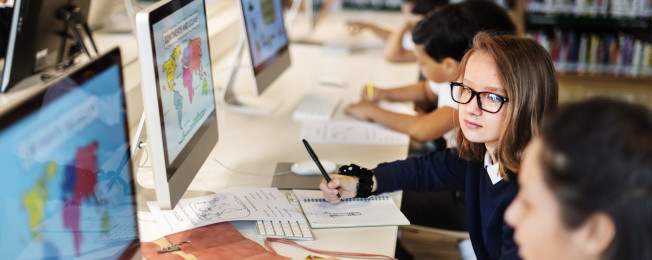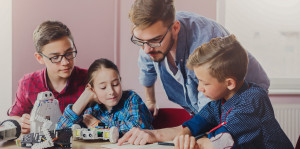Digital technology is redefining our world in many ways, but perhaps the most important change is how it’s driving inclusivity for previously marginalized groups.
If we are to unleash the full power of innovation in the years ahead, we must first ensure that people from all walks of life are able to make their mark.
As a mother of three children, including a 12-year-old son who is on the autistic spectrum, I am extremely passionate about combining creativity and technology to produce stronger, more inclusive communities.
Despite often having the desired skills, around 80% of adults with a disability are discriminated against and not employed.
The solution to bridging this employment gap is twofold. Firstly, we must cultivate inclusivity by bringing children from special educational needs schools and mainstream schools closer together. Secondly, we must create a careers pipeline by engaging with prospective employers.
Digital can play a vital role in achieving this, but equally important is creating environments and ‘safe spaces’ to have dialogue and play, on and off-line. We must also prioritize the basic human skills of teaching empathy and critical thinking in a fun and interactive way.
In this amazing era of digital transformation, we must combine technology and human interaction in our classrooms, so we can lay the foundations for a sustainable future.
Classroom collaboration is key

My career has taken me from looking at how we design interiors to how we design communities. What I have realized along the way is that we must harness technology, along with creativity, from an early age to develop critical skills.
Young children of primary school age are instinctively creative – unfortunately this innate creativity is diluted over the years within most high school institutions, as academic pressures take their toll.
We need to think carefully about how we can encourage our children to maintain this creativity and link it with the digital world. It’s important to offer them something beyond just gaming, so they can explore and develop their critical thinking and social skills, while maintaining good mental health and well-being.
This is why I decided to launch the Analogue to Digital initiative. This is essentially an interactive digital and creative workshop. It brings together vulnerable young people and those from special educational needs schools, with those who are within mainstream education.
The relationship between the two groups was very organic because they were working together in small teams. Everything that the children from the mainstream schools could do, the children from the special needs school could also achieve with little guidance. Right through from learning and allowing them the space to develop their storytelling techniques, to creating 3D designs to print on the computer.
Two weeks after our initial pilot workshop, I personally delivered to the schools the 3D printed name badges and keyrings that the children had made. The sense of achievement from all of them was wonderful to behold.
Rozina Spinnoy of @BelgiumDesignE3, discussed how innovations like 3D printing and virtual reality are changing education at #Makerstown. #DigitalDirections pic.twitter.com/ZbF7PNGn63
— Tata Consultancy Services - Europe (@TCS_Europe) May 24, 2022
Laying the foundations for STEAM careers
If we are to build a digital future that promotes sustainability and inclusivity, then we must make sure the education our children receive is fit for purpose. Schools must start prioritising science, technology, engineering, arts, and mathematics (STEAM) studies.
Analogue to Digital started two years ago to shine a light on this issue and our work is already beginning to bear fruit. From planting the seed, to planning and running the pilots, we’re now starting to implement our methods within schools. In September one of the schools that we’ve worked with will open a ‘STEAM Lab’ and we will play a role in shaping this.
Another important facet of Analogue to Digital is about preparing our children for this digital future. Our ‘youthpreneurs’ initiative is all about how we’re teaching our youngsters how to connect with entrepreneurs and businesses.
This might involve an afternoon trip to see a technology firm, or perhaps it’s simply being inspired by a local entrepreneur. This gives young people a different perspective on the world around them and it also encourages critical thinking and contributes to developing an entrepreneurial mindset. Ultimately, this could serve as a springboard to future careers for our youngsters.
Meanwhile, I’m also looking at the positive and challenging links between digital and mental health and well-being. I recently went to a presentation by an expert in the mental health field, who stated that over 40% of youth in the Flanders region suffer from a mental-health-related issue.
Introducing the initiative around the world
Analogue to Digital started in Belgium, with pilots hosted in Brussels and Flanders, but we have high hopes for the project and intend to roll it out internationally.
I am hopeful we will soon be able to take the program to countries including Scotland and some countries in Asia. I’ve also had some interest from African nations. Of course, the fact that this is a non-profit organization will have some bearing on our international presence as we rely heavily on local partners to help fund the scheme.
Another area of development is the creation of a program for teachers because they must also be exposed to technology and the wider digital transformation.
For me this is a very personal and emotional project inspired by my son. I feel passionate about education, and the opportunity to help shape a more inclusive digital education in communities around the world is a tremendously exciting proposition.


